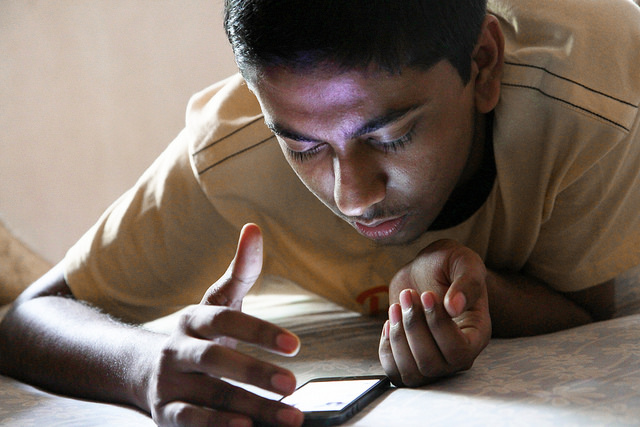This is a battle that has raged on for over 7 years now.
Everybody knows about the benefits of smartphones in general, but which OS is better suited for your preferences? This is probably the biggest question on your mind when you decide to buy a smartphone.
Initially created for the iPhone, iOS now powers most Apple devices, including the iPhone, iPad, and iTouch. Android, on the other hand, is the OS of a stupendously large range of devices. Both come with their own pros and cons—let’s take a closer look at these and attempt to find out which OS is right for you.
Introduced in July 2008, iOS now powers about 14.8% of all smartphones in the world. Its latest iteration is iOS 9, which was released in September 2015.
Android, first seen in September ‘08, powers a whopping 81.5% of the smartphones in the world today. The latest version is Android 6.0 Marshmallow, which was released in September 2015.
Let’s dive right into it and see how these two giants stack up against each other.
The Interface, a.k.a. Your Visual Experience
This refers to your interactive experience with the OS. Android and iOS have a certain number of common features in this department; these include taps, swipes, and pinch-to-zoom features.
In addition to icons, the Android allows the use of rectangular widgets, which can display auto-updating info like weather, news, or an incoming text.
Both Android and iOS have a status bar at the top of the display, which gives you information on data connections, battery status, cell signal, and time.
Since Android isn’t limited to devices from a single manufacturer, there are several customisations over the plain ‘vanilla’ or ‘stock’ experience. Also, depending on the manufacturer, you might have various apps pre-installed on your Android device.
Both Android and iOS boast selective notification features. In iOS, it’s called ‘Do Not Disturb’, and in Android, it’s called ‘Priority Mode’.
Apps And Availability
The Google Play Store is slightly better than the App Store in sheer number of available apps, with 1.6 million apps to the latter’s 1.5 million.
Many of the apps that were once iOS exclusive are now available on Android as well; a key example would be Instagram, which was initially only available on iOS.
Apple generally gets the lion’s share of new apps; startups that are creating an app can only concentrate on one platform due to limited resources, and they tend to favour iOS. These, like the recent Periscope and Meerkat apps, eventually do end up reaching Android, but it might take some time. This depends entirely on the developer.
However, Google’s new apps (and updates for their existing ones) are released first on Android.
One major plus for Android is that this OS helps you make full use of your phone’s capabilities. Apps like TrueCaller and Smart Spends simply don’t work as well on an iOS device.
Innovative Hardware
As Google takes care of most of the software side of Android devices, the manufacturers get creative with the hardware components.
Examples include an IR blaster that helps you use your phone as a remote control for various appliances including TVs and Set Top Boxes. Front-facing speakers are also handy when showing off the funny video you just downloaded.
Apple is no slouch in the innovation department either—features like Retina Eye Display, fingerprint scanning, and 3D touch have consistently set industry benchmarks.
Moreover, there is a humongous gap between top-end and budget device features on Android devices, which brings us to…
Uniformity (And It’s Lack)
Since Android devices are made by a number of manufacturers, there’s a large variation in the quality, features, and hardware available.
If you want the best that Android has to offer, your search needs to be extensive. With Apple devices, choosing is much simpler.
Software upgrades are another pain point.
While some Android manufacturers offer software upgrades as soon as they’re released, others could delay them for a long time. Besides, some older devices are simply not compatible with certain upgrades.
Apple definitely has the upper hand in terms of consistency across its devices. If you’re willing to do a bit of research, however, you can get an Android phones with the same (and sometimes better) features for a significantly lower price.
Pricing
Apple devices have a reputation for being pricey, and some folks have even gone so far as to dub this price difference ‘Apple Tax’. For instance, when going for a 64GB version of the latest iPhone instead of the 16GB variant, you pay a price difference that would get you a full Android device!
The Verdict: iOS or Android?
This is a never-ending debate.
Even after these comparisons, we’ve barely touched upon the tip of the iceberg. This is because both of these OS’ have their pros and cons, and irrespective of which one you use, you wind up with most of the common smartphone advantages.
It’s no longer a matter of a simple comparison of features; both these OS’ have borrowed so much from each other that your decision depends more on factors like brand appeal and ability to customise, than the features themselves.
In a nutshell, for more hardware and software options and customisations, choose Android. If you want complete reliability and like the Apple design aesthetic, choose iOS.
Download Quikr App for Android, Windows and iOS devices here.


